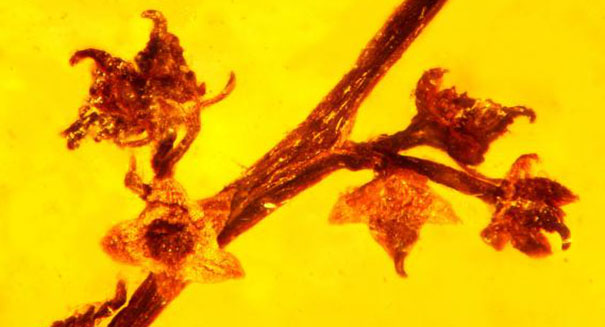
Due to the sticky appearance of the pollen of these flowers, the researchers believe that it was carried by a pollinating insect.
Researchers at Oregon State University have uncovered an ancient piece of amber that shows the oldest evidence of sexual reproduction in a flowering plant. Oregon State researchers contend that the reproduction process looks identical to the process that angiosperms still utilize today.
According to researchers, the flowering tree sap blanketed the specimens and then started the lengthy process of turning into a fossilized, semi-precious gem.
The amber fossil reveals a tiny image of pollen tubes forming out of two grains of pollen and penetrating the flower’s stigma.
“In Cretaceous flowers we’ve never before seen a fossil that shows the pollen tube actually entering the stigma,” exclaimed George Poinar, Jr., a professor emeritus in the Department of Integrative Biology at the Oregon State University College of Science.
Due to the sticky appearance of the pollen of these flowers, the researchers believe that it was carried by a pollinating insect. This observation and others gave scientists a new window into the biodiversity and biology of life during the Cretaceous Period. During this period, lineages of mammals and birds were starting to emerge, along with the flowering plants.
“The evolution of flowering plants caused an enormous change in the biodiversity of life on Earth, especially in the tropics and subtropics,” Poinar posited.
The fossils were located in amber mines in the Hukawng Valley of Myanmar.
You can read more about their research in the Journal of the Botanical Institute of Texas.
Leave a Reply